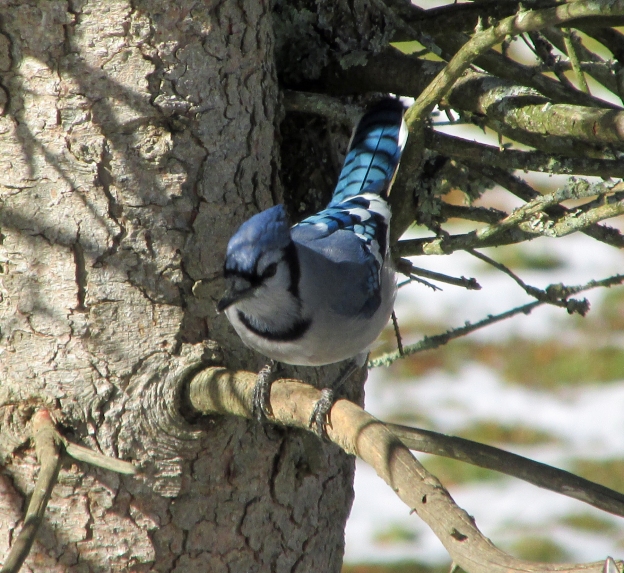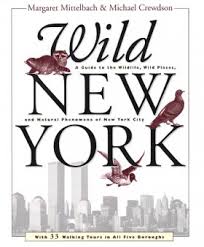
Photo by Bryan Stevens • This adult bald eagle was one of several counted on this year’s Christmas Bird Count.
The 77th consecutive Elizabethton Christmas Bird Count was held by members and friends of the Elizabethton Bird Club on Saturday, Dec. 14. Participants in the long-running CBC tallied a total of 63 species of birds, which was down considerably from the recent average of 73 species. The all-time high for this count consisted of 85 species and was established two years ago with the 2018 Elizabethton CBC.
The temperature lingered in the 40s all day with light rain. The low species total, as well as low individual numbers, was likely due to the lousy weather, according to long-time count compiler Rick Knight.
Knight noted some count highlights, including single representatives of ruffed grouse, pine warbler and red-headed woodpecker. In addition, 75 wild turkeys, 181 Eastern bluebirds, and 449 cedar waxwings demonstrated that some birds were far from scarce.
The 1,015 individuals counted made the European starling the most abundant bird on this year’s CBC, followed by cedar waxwing (449), American robin (371) and Canada goose (319).

Photo by U.S. Fish & Wildlife Service • The European Starling ranked as the most common species on the count.
Notable misses included almost all the ducks — only three species being found. Knight noted that duck numbers have been low so far this season.
Counters also missed finding killdeer, Wilson’s snipe, Eurasian collar-dove, red-breasted nuthatch, brown thrasher, Eastern meadowlark, white-crowned sparrow and fox sparrow. A single Eastern screech-owl represented the only owl species found on the count.
My own count area consisted of territory around Watauga Lake and the town of Butler. Accompanying me on this count were Brookie and Jean Potter, David and Connie Irick, Eric Middlemas, Brenda Richards and Chris Soto.
Highlights of our day counting birds in mid-December included numerous sightings of bald eagles and a welcome and restorative lunch at Dry Hill General Store and Deli in Butler. We also enjoyed our observations of a common loon, horned grebe, and several species of raptors.

Photo by Bryan Stevens • Nine red-tailed hawks made it onto this year’s Elizabethton Christmas Bird Count.
Here’s the final total for the 2019 Elizabethton CBC:
Canada goose, 319; mallard, 268; ring-necked duck, 4; bufflehead, 107; ruffed grouse, 1; and wild turkey, 75.
Common loon, 1; pied-billed grebe, 4; horned grebe, 1; double-crested cormorant, 4; and great blue heron, 18.
Black vulture, 4; turkey vulture, 38; sharp-shinned hawk, 4; Cooper’s hawk, 1; bald eagle, 6; and red-tailed hawk, 9.
Ring-billed gull, 20; rock pigeon, 246; mourning dove, 200; Eastern screech-owl, 1; and belted kingfisher, 11.
Red-headed woodpecker, 1; red-bellied woodpecker, 10; yellow-bellied sapsucker, 10; downy woodpecker, 21; hairy woodpecker, 2; Northern flicker, 27; and pileated woodpecker, 7.
American kestrel, 8; Eastern phoebe, 7; blue jay, 164; American crow, 299; and common raven, 1.
Carolina chickadee, 133; Tufted titmouse, 61; white-breasted nuthatch, 29; brown creeper, 1; winter wren, 5; and Carolina wren, 94.
Golden-crowned kinglet, 15; ruby-crowned kinglet, 1; Eastern bluebird, 181; American robin, 371; Northern mockingbird, 57; European starling, 1,015; and cedar waxwing, 449.
Pine warbler, 1; yellow-rumped warbler, 61; Eastern towhee, 17; chipping sparrow, 16; field sparrow, 28; Savannah sparrow, 5; song sparrow, 125; swamp sparrow, 1; white-throated sparrow, 40; and dark-eyed junco, 45.
Northern cardinal, 124; brown-headed cowbird, 1; house finch, 72; American goldfinch, 63; and house sparrow, 29.

Photo by Jean Potter • Two species of warbler — pine warbler, pictured here, and yellow-rumped warbler — made this year’s Elizabethton CBC.
Roan Mountain CBC finds 49 species
The Elizabethton Bird Club conducts a second CBC for Roan Mountain in Carter County, Tennessee. The 67th Roan Mountain CBC was held the following day, Sunday, Dec. 15, with eight observers in two parties. The skies had cleared from the previous day. Participants counting at elevations above 4,500 feet found an inch of fresh snow.
Knight noted that a good cone crop is present in the spruce-fir forest. The count tallied 49 species, which is three above the recent 30 year average. The all-time high on this count was 55 species found in 1987. Lower species totals on this count are due to harsher climate in higher elevations, less diversity of habitats, and lower number of observers and parties.
Some highlights included 26 Canada geese. On most CBCs, Canada geese would not be considered extraordinary, but Knight noted there are few records on the Roan Mountain CBC for this goose. Other highlights included 11 American black ducks, two red-breasted nuthatches and a single purple finch. A single American kestrel, which is also represented by only a few records on this count, was found. The counters found 27 common ravens, which meant that this corvid species outnumbered its relative the blue jay, which tallied only 21 individuals.
Knight suggested that a few notable misses for this count included sharp-shinned hawk, brown creeper and fox sparrow.
The Roan Mountain CBC total follows:
Canada goose, 26; American black duck, 11; buffledhead, 17; hooded merganser, 1; wild turkey, 2; pied-billed grebe, 2; and great blue heron, 1.
Turkey vulture, 3; Cooper’s hawk, 2; red-shouldered hawk, 2; and red-tailed hawk, 2.
Rock pigeon, 14; mourning dove, 34; belted kingfisher, 1; red-bellied woodpecker, 4; yellow-bellied sapsucker, 3; downy woodpecker, 14; hairy woodpecker, 1; and pileated woodpecker, 2.
American kestrel, 1; Eastern phoebe, 4; blue jay, 21; American crow, 96; and common raven, 27.
Carolina chickadee, 46; tufted titmouse, 31; red-breasted nuthatch, 2; white-breasted nuthatch, 12; winter wren, 1; and Carolina wren, 21.
Golden-crowned kinglet, 9; Eastern bluebird, 18; American robin, 126; Northern mockingbird, 1; European starling, 33; and cedar waxwing, 12.
Yellow-rumped warbler, 1; Eastern towhee, 17; field sparrow, 3; song sparrow, 68; white-throated sparrow, 11; and dark-eyed junco, 62.
Northern cardinal, 19; house finch, 2; purple finch, 1; red crossbill, 10; pine siskin, 1; and American goldfinch, 6.





